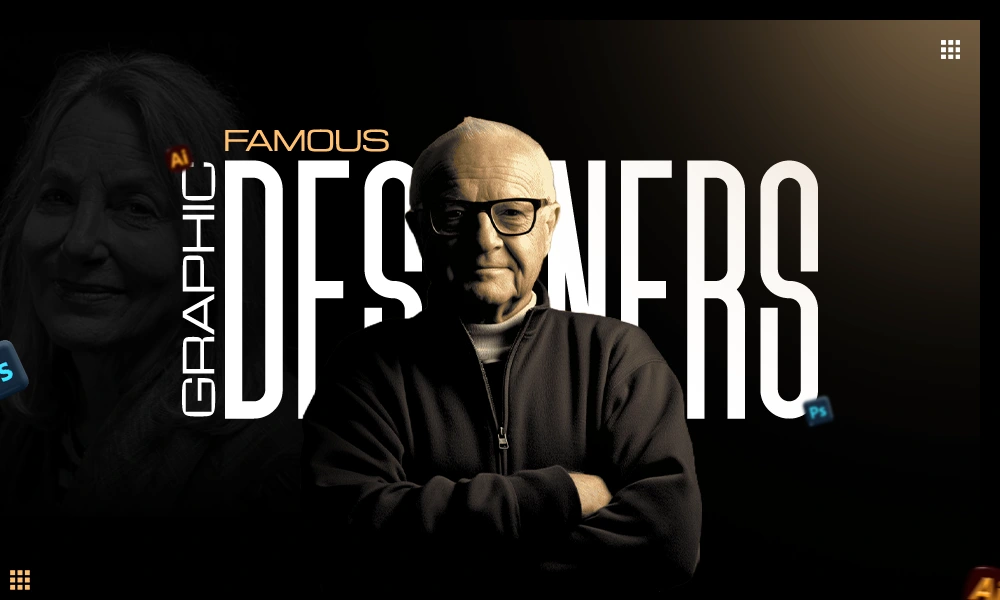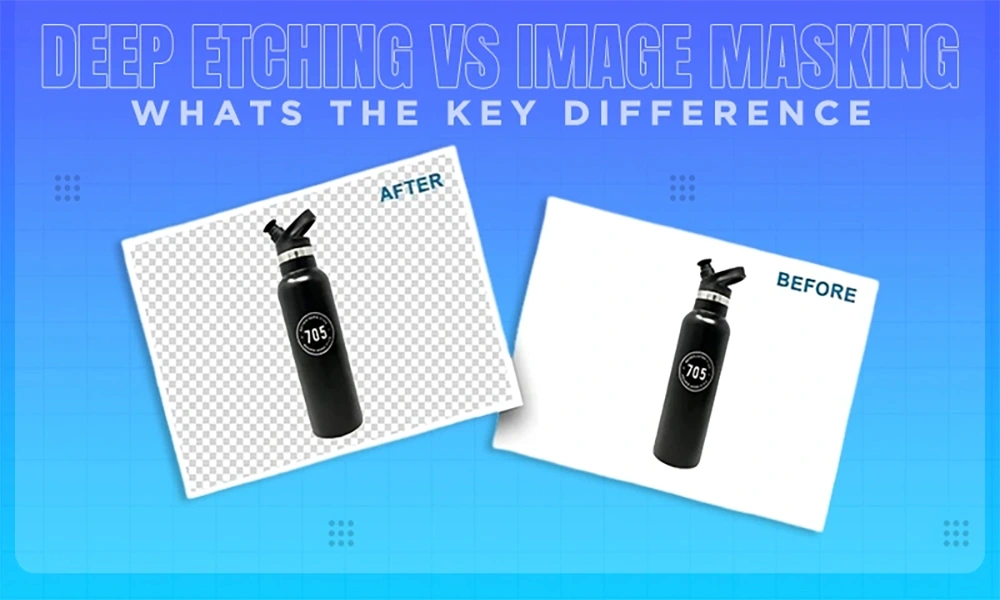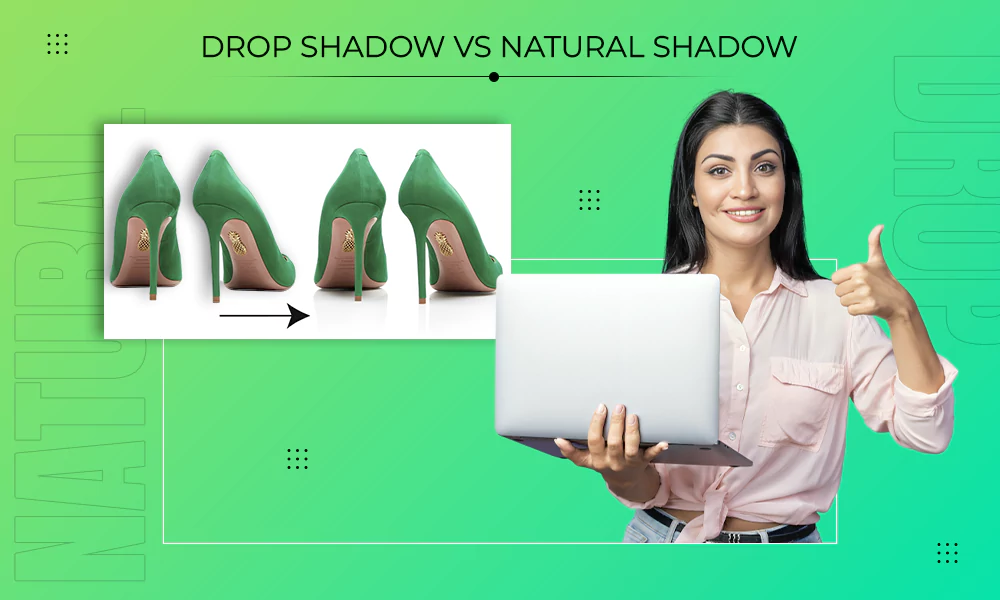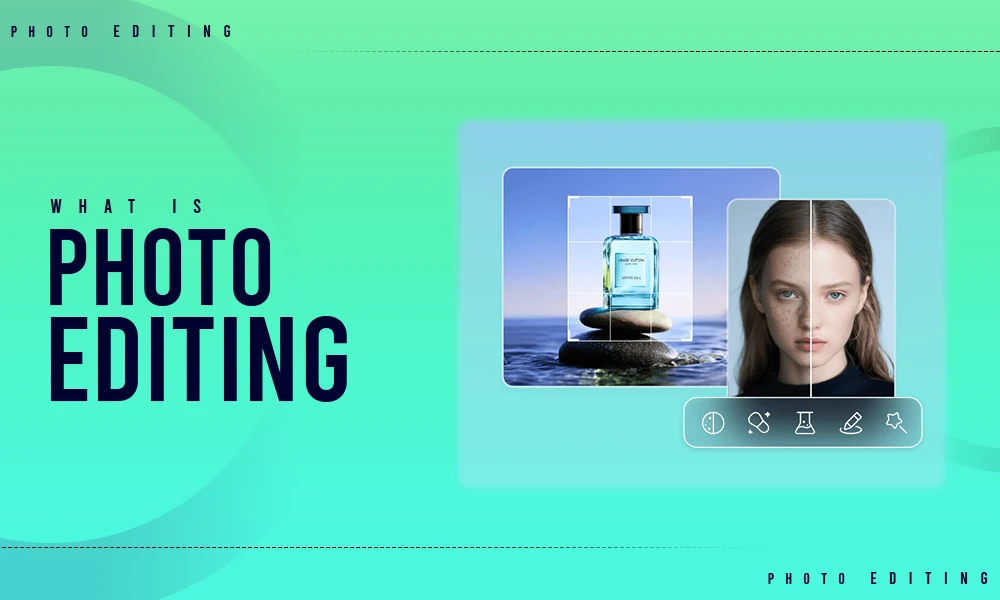In Photoshop editing, “What is a clipping path?” is a key question. High-end editing cannot be done without clipping paths.
A clipping path is an essential technique in digital photo editing. It helps to remove specific parts of an image by separating them from the background. Many people commonly use this technique in Photoshop. It helps editors highlight a subject, like a person or product, with great accuracy.
This technique is very crucial when editing images with small details. This includes product edges, jewelry, or hair strands.
Designers use clipping paths to keep the chosen subject visible and distinct from the background. The path conceals anything outside it, creating a clean and professional look.
What is Clipping Path in Photoshop?
A clipping path is a vector outline drawn around an object in an image. It helps remove the object from the background. The path serves as a mask once someone completes it. It shows only the content within the path and masks or removes everything outside of it.
People often use this technique in product photography, ecommerce image editing, and ad design. It allows designers to make an image with a clear background. They can also change the background without changing the shape or quality of the object.
Software Used for Creating Clipping Paths
The Pen Tool in Adobe Photoshop is the most popular choice for making clipping paths. Other programs, like Adobe Illustrator, also have vector path tools. Graphic designers can control the curves, corners, and points of the path with these tools. This helps you ensure that the subject gets cut out accurately with smooth edges.
Why Is Clipping Path Important?

Precision Editing: It is ideal for removing complex subjects with sharp features or fine details.
Clean Background Removal: Perfect for e-commerce, catalog design, and print media.
Professional Image Output: It helps provide visual consistency across multiple products or promotional images.
Enhanced Versatility: It allows isolated images to be put on various backgrounds with ease when using them as advertisements, brands, or designs.
Clipping Path vs. Deep Etching: Are They the Same?
In graphic design and picture editing, designers frequently use the terms clipping path and deep etching similarly. Deep-etching is a term often used in Australia and some parts of Europe. Both places use the same basic technique. This technique separates a subject from its background with a vector outline.
Both clipping path and deep etch mean removing or hiding the background of an image. This allows the user to place the subject on a new background or a transparent design. This is an important step in eCommerce photo editing, product photography, catalog design, and advertising visuals, where images without backgrounds are significant.
Can Adobe Illustrator Use Clipping Paths?
Yes, Adobe Illustrator can also use clipping paths, but they work a little differently than they do in Photoshop. A clipping path in Illustrator is a vector shape that hides everything outside of its borders, so only the content inside is visible.
Designers use Illustrator’s clipping path feature to:
- Make complex shapes and vector masks
- Minimise the view of images in logos or designs
- Use for digital media and print cutouts that are shape-based
Clipping Path vs Image Masking: What’s the Real Difference?
Clipping paths and image masking are both methods for separating a subject from its background. Still, they are used for different types of editing, depending on the complexity and texture of the object.
What is Clipping Path?
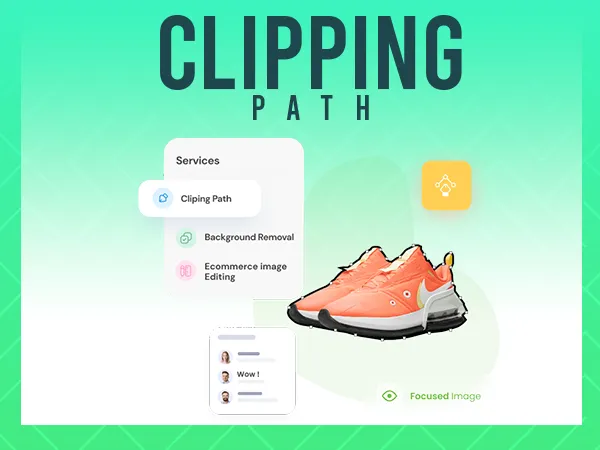
A clipping path is a vector outline that you draw by hand around a subject, usually with the Pen Tool in Photoshop. It works best with pictures that have sharp edges and clear shapes, like
- Cars
- Electronics
- Furniture
- Apparel
After closing and applying the path, everything outside of it is eliminated, leaving only the topic with well-defined borders.
What is Image Masking?
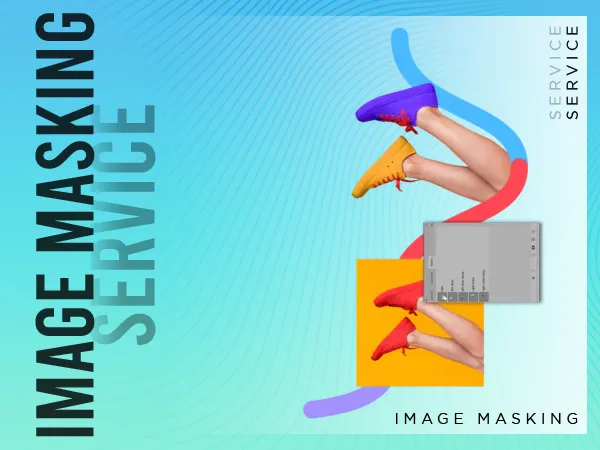
Image masking is a more advanced and flexible way to edit soft edges, hair, fur, smoke, or see-through things. Image masking doesn’t cut the object with vector shapes; instead, it uses pixel-level transparency and gradient-based selections.
Some common uses are:
- Isolating models with hair that flows
- Editing glass, fur, or feathers
- Making soft fade-outs or layered compositions
The Major Differences Between Clipping Path And Image Masking
| Feature | Clipping Path | Image Masking |
| Edge Type | They have defined hard edges. | Soft, feathered edges |
| Best For | Products, logos, and solid objects | Hair, fur, semi-transparent materials |
| Method | Vector-based (Pen Tool) | Pixel-based (Masks, Channels) |
| Precision | Perfect for geometric or sharp shapes | This is most suitable for complicated textures |
| Output | Opaque vs transparent | Supports varying transparency levels |
How to Use Each Technique?
Use clipping paths to create clean cutouts of products, especially in ads, catalogs, and e-commerce websites.
Use image masking on pictures where detail and softness are important, like fashion shoots, hair retouching, and natural textures.
What are The Types of Clipping Path with Examples?
There are several types of clipping paths, each perfect for a certain picture-altering requirement. Here are a few examples of popular clipping path types:
1. Simple Clipping Path
A simple clipping path is ideal for beginners or quick edits because it works best on simple objects with clean, straight edges. It has a simple vector outline with only a few anchor points.
For Example:
- A solid white background with a ceramic coffee cup on it
- A rectangular book cover
2. Medium Clipping Path
Medium-level paths are best for things that have more detail, like curves, holes, or edges that overlap. These need more time and accuracy than simple paths.
For Example:
- A pair of sneakers with very detailed laces
- A watch with several curved parts on the wrist
3. Complex Clipping path
You need a complex clipping path when working with things that have a lot of small parts or holes inside. These pictures need to be of very high accuracy and have a lot of anchor points.
For Example:
- A chandelier with glass droplets
- A bike with wheels, spokes, and a lot of layers
4. Super Complex Clipping Path
This advanced technique is applied to highly detailed subjects that have transparent elements, overlapping objects, or soft borders. For optimal effects, super complicated pathways are frequently paired with masking.
For Example:
- Hair flowing on a fashion model against a busy background
- Jewelry with stones, reflections, and shadows
What are the Tools & Techniques Used in Clipping Paths?
Depending on the complexity of the task, one can apply different techniques as well as tools:
1. Pen Tool (Photoshop & Illustrator)
The Pen Tool is the reference standard for clipping paths. It offers the greatest amount of control and is the best of the class to impart definition to edges.
2. Lasso Tool
Lasso Tool is a freehand tool that can be used to quickly select objects, but it does not include the precision required to select complex shapes.
3. Masking Techniques
Although not strictly clipping paths, masking techniques (layer masks, vector masks, alpha channels) may be used in conjunction with clipping paths to make them more flexible in general, and in particular, so far as transparency and gentle edges are concerned.
4. Magic Wand Tool
The Magic Wand Tool is ideal where quick selections of high contrast objects are necessary; it can select regions of like shade. It is suitable in the background of the same color or solid.
5. The Selection of The Color Range
This is one of the ways to isolate objects with similar colors. It comes in handy when processing batch images that use similar color themes.
6. Vector Software (e.g., Adobe Illustrator)
Illustrator can draw with pinpoint accuracy (scalable vector path), which is excellent in the case where such work requires a high-resolution image or print-quality graphics.
Clipping Path Applications: Use Cases, Advantages, and Pricing
Clipping path is the best technique used in recent image editing processes, mainly when clear, isolated images are required. Regardless of whether you are preparing product images in an online store or creating advertising materials, clipping paths can be used to achieve professional-quality pictures since they involve the removal or addition of backgrounds in a precise manner.
The Common Applications of Clipping Path in Digital Imaging
This is how the industry professionals can apply clipping path services in real-life situations:
1. Product Photography
Gaar clipping path is a sure-shot formula when it comes to editing the photos of the products, particularly of e-commerce brands. It assists in eliminating the background noise, providing quality, clear, or white-background photos ideal for listing online, print, and web advertisements.
2. Background Removal
Cluttered shot to be cleaned up? With a clipping path, you can omit the unwanted or undesired background and retain the subject, a person, a product, or an object, in focus.
3. Background Replacement
Wish to put your subject in a different environment? Once the clipping path has been applied to isolate the object, simply replace the background, which makes it perfect when designing a banner, putting some advertisements or posts on social media.
4. Editing Object Isolation
Besides the products, clipping paths can isolate people, animals, cars, furniture, or any object in an image. It is particularly helpful in resizing and manipulating images, creating an overlay, or compositing several objects in a scene.
5. Layer Compositing Image Masking
Clipping paths are frequently used in combination with image masking to merge images (or give transparent effects) in Photoshop composites, ad layouts, or magazine covers.
6. UI & Web Design
Transparent or cut-out images ensure that there is a clean flow of the layout by the designers of the websites and apps. The clipped images can easily be overlapped with a gradient, banners, or layered web elements.
Advantages Of Using Clipping Path in Image Editing
There is a range of benefits to using clipping paths, particularly when large numbers of visual assets are involved or when the work is concerned with brand.
| Benefit | Description |
| Precision Cutouts | Clean, sharp object isolation with pixel-level accuracy |
| Transparent Backgrounds | Ideal for e-commerce, UI design, and product packaging |
| Consistent Image Presentation | Perfect for brands that need visual uniformity |
| Easy Background Changes | Replace, enhance, or blur backgrounds effortlessly |
| Increased Visual Appeal | Professional edits result in better product perception and conversions |
| Custom Edits | Make selective adjustments (like color correction or shadows) without affecting the entire image |
| Handles Complex Objects | Great for intricate items like jewelry, lace, or hair strands |
| Better Print Output | High-resolution cutouts improve print quality for magazines, flyers, and brochures |
| Faster Workflow | Enables batch processing with reusable clipping paths |
| Versatile Utility | Can be combined with masking, color correction, and retouching tools |
Which Industries Rely on Clipping Path Editing?

Clipping path falls under many uses in various industries and professions. In case the content of your work deals with the use of images, there is a probability that you can find it useful.
E-commerce Retailers
To attract customers, online shops require presentable photographs of items that are devoid of any form of distraction. Clearness of background and consistency in presentation will make it
professional and trustworthy.
Product, Wedding, Fashion Photographers
Clipping paths tend to help professional photographers isolate the subjects, correct, and get the images ready to be passed to the client as well as for their portfolios.
Graphic Designers
Clipped images are incorporated in design to be used in advertisements, flyers, banners, posters, and any other material that needs gap-free integration.
Adverts & Creative Agencies
The need for having high-quality isolated visuals (to allow design flexibility) often strikes agencies that are working on billboards, marketing campaigns, or packaging.
Print Media & Publishing
Issues such as magazines, catalogs, newspapers, and brochures usually undergo the need of clipping paths to make the photos look perfect on-page printing without any rough edges or unnecessary backgrounds.
Web Designers
The transparent backgrounds load quicker, scale better, and enhance the beauty of a site.
Jewelry and Fashion Houses
Jewelry & Fashion Brands
Such industries depend upon detailed editing to feature small textures and blistering details to the same effect without compromise on the quality.
Furniture, Architecture, and Interior Design
The isolation of the objects results in the necessity of rendering 3D mockups and product presentation, where the exact placement of items is required in the layout or construction of a scene.
Social Media Influencer and Content Creators
Clipping path services help influencers to create clean posts, promotional partnerships, and thumbnails with a powerful visual image.
What are the Costs of Clipping Path Service?
A clipping path service’s price varies according to the complexity, volume, urgency, and editing skill of the image. Here is the following price table.
| Complexity Level | Estimated Price (Per Image Cost) |
| Simple Object | $0.50 – $2 |
| Medium Detail | $2 – $5 |
| Complex Shapes | $5 – $10 |
| Super Complex or High-Res | $10 – $25+ |
How Can You Find a Reliable Clipping Path Service Provider?
To make sure that you will obtain only high-quality results, follow a simple selection process:
1. Identify The Editing Requirements
- What is the number of images?
- What is the level of complexity of the subjects?
- Do you also require retouching or background replacement?
2. Compare Several Providers
- Search businesses that have a large portfolio and are well-reviewed
- Make sure that they have policies of revision or satisfaction guarantees
3. Check Portfolio & Samples
- Demand actual before and after materials of past customers
4. Analyse the Turnaround Time
- Ensure that delivery schedules do not delay your work, especially when you are deadline-bound
5. Ask For Transparent Pricing
- Quotes should be provided, and any additional costs for revision or complicated images should be included
6. Check Data Security Policies
- Confidentiality should be given to your pictures and business data
7. Access Communication: How to Support
- An on-call support team would be important in managing high-priority projects or corrections
Wrap-Up: The Role of Clipping Paths in High-Quality Visual Production
Enhancing your editing workflow can be achieved by knowing the different types of clipping paths and when to use them. This strategy guarantees cleaner images, more consistent branding, and improved conversion rates, whether you’re an e-commerce company, freelance editor, or product photographer.

